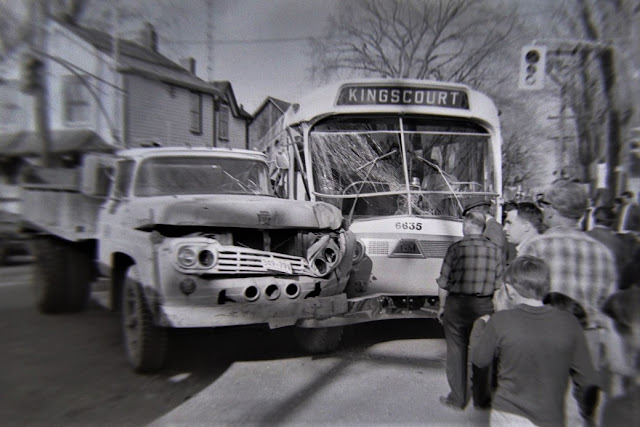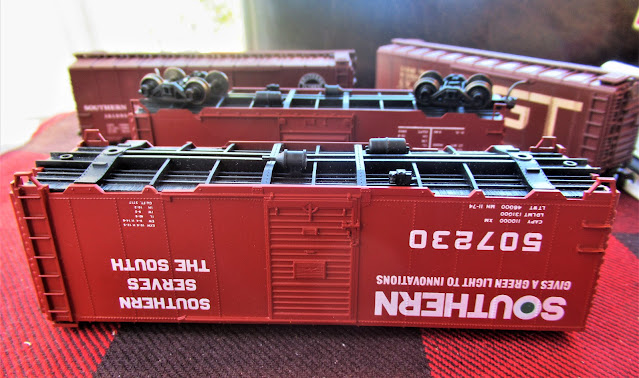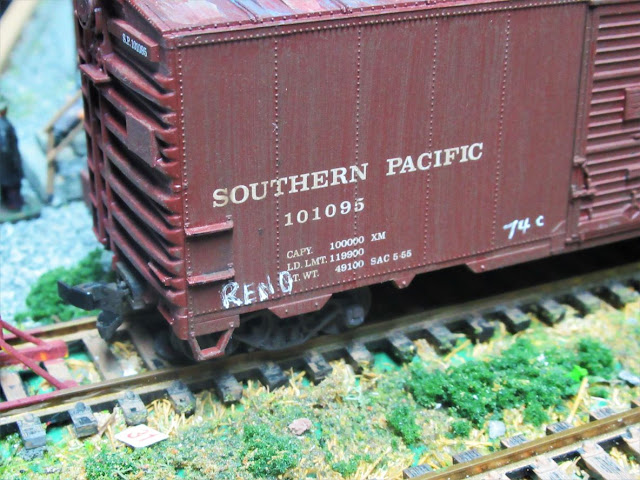On June 12, 1969 it was a case of a boat taking a train to the water! The boat was a new harbour craft for the local naval reserve unit, HMCS Cataraqui. While I have no information about where this spritely craft came from, it was not sailed to Kingston. No, it arrived on a flatcar at the Kingston grain elevator! Spotted between the two sets of loading equipment on the west side of the elevator, a Link-Belt road crane was driven down the paved tracks to do the unloading directly into the lake. The top view looks toward land, the other two below toward the lake.
This appears to be the Crossbow (YMU-116), a 46-foot workboat built in 1954 by Russel Brothers in Owen Sound. She variously served with naval reserve divisions HMCS Hunter (Windsor), HMCS Prevost (London) and HMCS York (Toronto), with her name derived from the main part of Hunter's crest. Since all three of these units are on CN lines, it seems she was shipped by one of them to Kingston. A Whig news report of the day suggested the Crossbow was lifted off a larger vessel, but clearly it was a flatcar, possibly a CN one.
Previous vesels operated in Kingston were:
- PTC 721 - a Fairmile motor launch (1948-50).
- Loganville - a 40-foot tug built by Russel Brothers in 1944. She arrived after a weeks-long journey from the Maritimes. (1948-56). (The Crossbow was to augment two smaller craft at HMCS Cataraqui at the time, Loganville being one.)
- Detector - a 65-foot patrol vessel built by Shelburne Shipyards for the RCMP in 1957, serving mainly in the Saint John area, then being transferred to the Navy in 1976.
Two views of preparations for the lift.
(Three photos from Queen's University Archives, Kingston Whig-Standard Fonds - V142.7-10)
















.JPG)


.JPG)






























